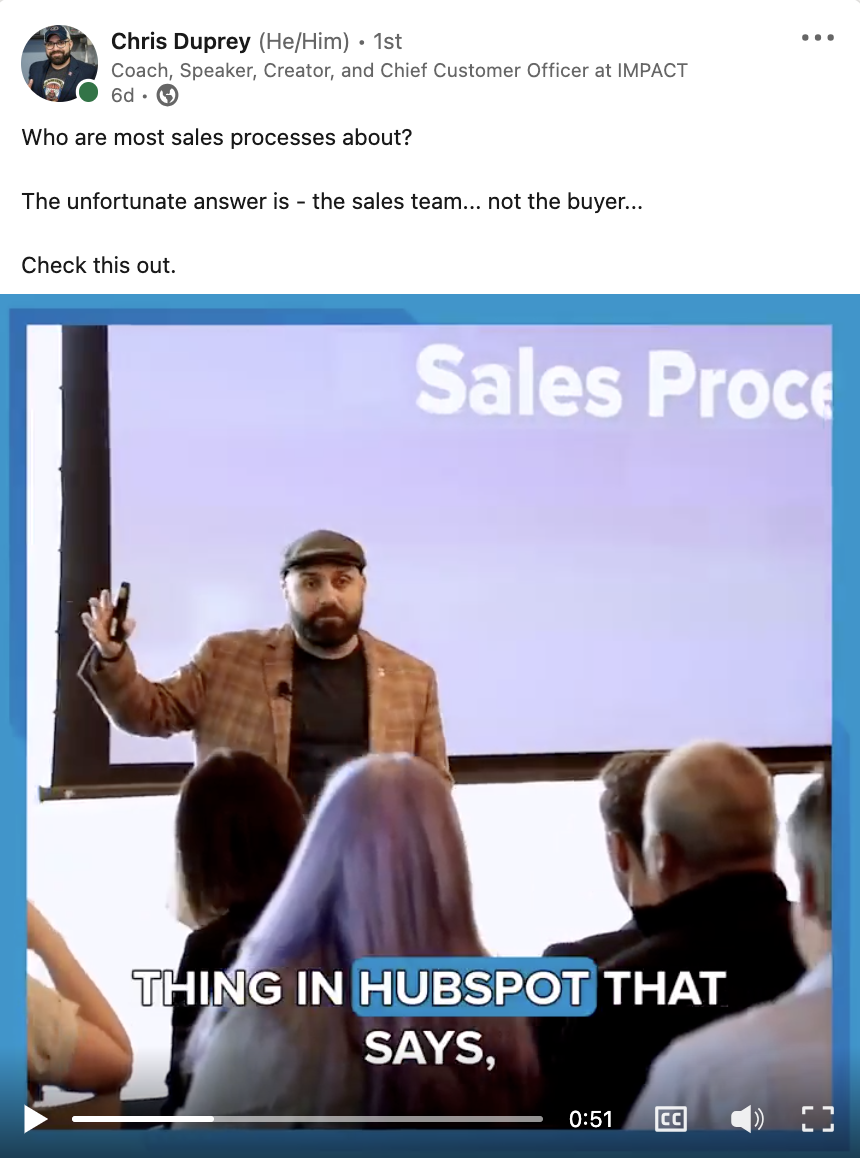Subscribe now and get the latest podcast releases delivered straight to your inbox.
Content strategies can be a lot like New Year’s Resolutions. You ponder how the year will go, and you set a plan for accomplishing your goals. Sure, you’ll have to make some tweaks along the way, but how weird could it really get?
If these past few years have taught us anything, it’s that our best intentions and perfectly made plans are always subject to change.
These days, it feels like outlooks can change by the hour, and you can find conflicting economic forecasts depending on where you look.
Here at IMPACT, we guide clients to success using They Ask, You Answer — a sales and marketing framework that was created during the Great Recession.
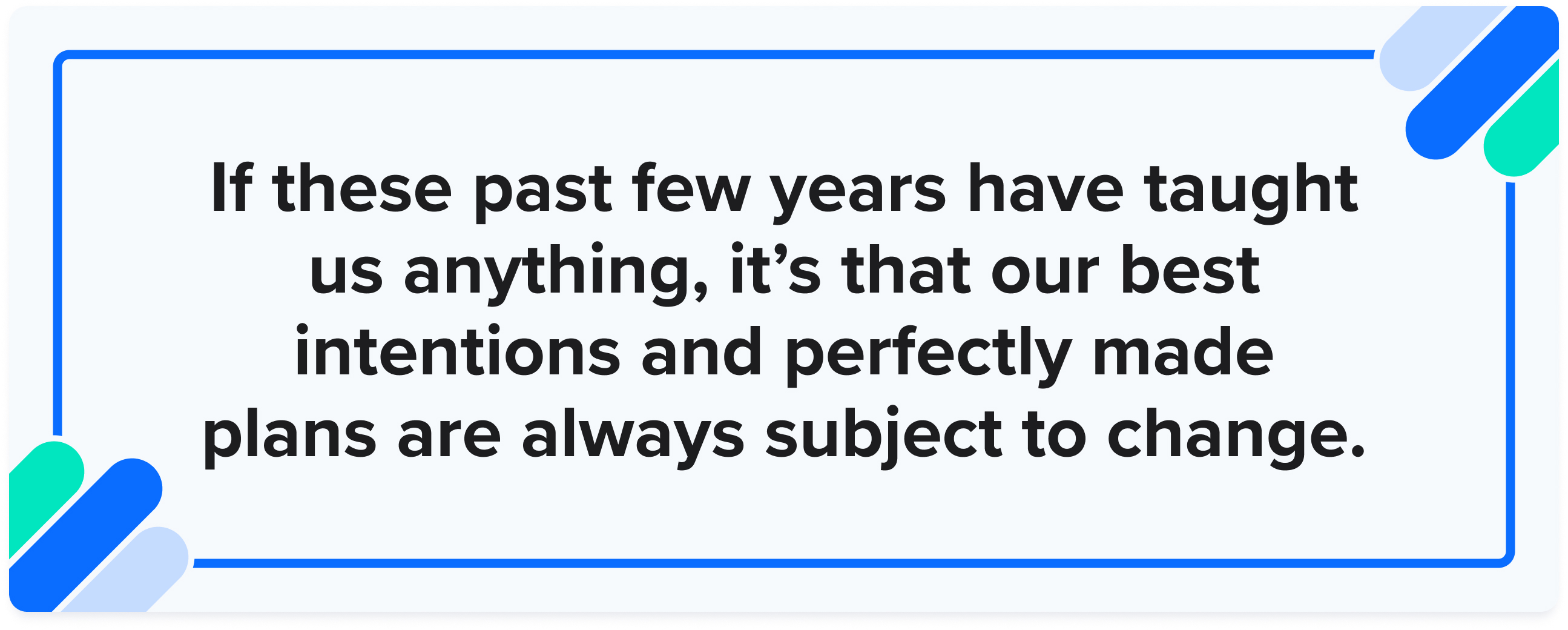
This is as good a time as any to remember that despite the ever-changing nature of the news, some things never go out of style: Honesty, candor, and thoroughness.
As you set out to plan your 2024 content marketing strategy, keep these principles as your guiding light.
Below, I'll give you a thorough look at how you can best plan for another year full of change and upheaval. That way, if things settle down and go smoothly, you'll be in perfect shape. As the old saying goes: hope for the best and prepare for the worst.
We will look at how to build a content marketing strategy in 2024. You'll need:
- Organizational buy-in
- In-house ownership
- Cross-department alignment
- Clear goals (with wiggle room for unforeseen changes)
- A well-defined audience
- User pathways
- And more.
In addition, you'll find articles, guides, and courses to help you plan and strategize.
How to plan a content marketing strategy when the outlook keeps changing
Planning for the future has never been easy. These past few years have only highlighted that fact.
Economic ups and downs are part of the natural cycle of business. While you can’t control the economy, you can prepare in the best way possible — and you can control your own reaction. However, if you choose not to prepare, you're less likely to make it through unscathed.
As you prepare to market to customers in the new year, think of how you're feeling right now. Exhausted? Stressed? Stretched thin?
Your customers are facing health, economic, and social threats, and their capacity to trust has worn thin. (And as we know, trust is the only true currency in business.)
So, how do you approach the new year? As a content and video trainer working with marketing managers around the world, I can give you my best take on preparing for the year ahead.
So what does a 2024 content strategy need to include?
Let’s look at how to build a better content strategy for the new year.
Think of this as the content manager version of The Home Edit (without the rainbow color coding). It’s time to look at: adding in everyday staples, deciding what to keep, keeping up with trends, and making space for new items.
Where do you start? Just like on TV, start by pulling everything out of the closet and sorting it out. This means digging up your old content strategy, along with all the changes you made to it along the way, and assessing what worked, what didn’t, and what missed the mark.
As you start to plan, make sure to include these key elements:
Organizational buy-in
You can spend weeks building a content marketing strategy to end all strategies, but that work means nothing if you don’t have foundational support.
I’ve said it before and I’ll say it again, your content strategy isn’t just a marketing document; it belongs to the entire organization.
You’ll need to have everyone in the company contributing to your content, whether they are writing, being interviewed as subject matter experts, sharing content, or enabling others to contribute. And this means that having their buy-in is crucial to your success.
This is especially true for aligning the marketing and sales teams.
If your sales team and your marketing folks can’t enjoy being in the same Zoom channel together for more than five minutes, something’s broken.
There’s too much at stake these days to fall back on the old us-versus-them trope. (And, honestly, how will that ever help grow business anyway?)
In a climate where many sales reps are feeling insecure about their ability to hit their revenue targets in the upcoming months, you can’t leave any room for miscommunication, and you can’t waste time on things that don’t drive sales.
It’s time to align these two teams so that they’re working together. There are all sorts of ways to do this, but IMPACT has found that creating a revenue team has been a game-changer when it comes to bringing people who are equally brilliant and strong-minded together.
In-house ownership
Even if you find a freelancer who becomes one of your favorite, most talented people in the world, they might (and can) leave you at any time.
I’ve known multiple people who have been burned by “perfect” freelancers — all of whom up and left suddenly, whether they got married, got a job with health benefits, or decided on a whim to move to Finland (true story). That’s a heartbreak that’s just not worth it.
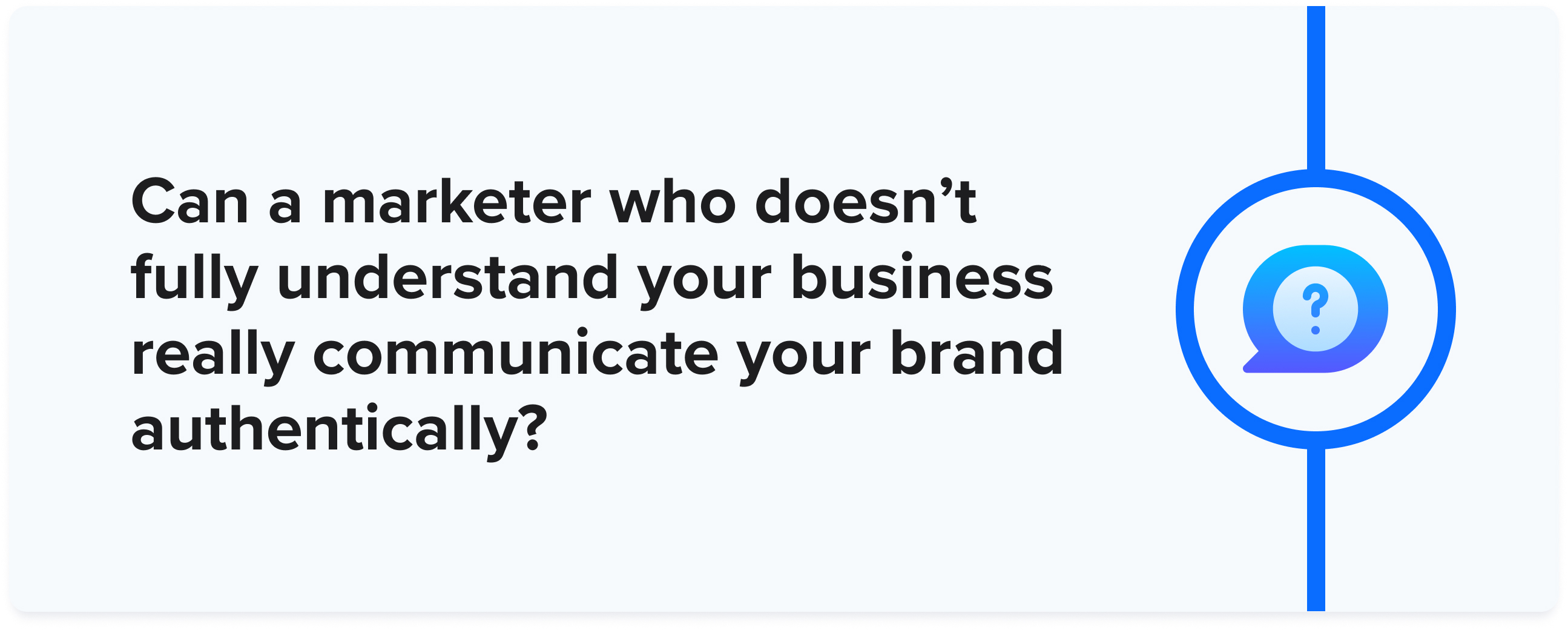
What’s more, let me ask you this — can a marketer who doesn’t fully understand your business really communicate your brand authentically? No, they can’t.
No one knows your brand better than you do, so own it. And to do that, you’ll need someone on your team, in-house, dedicated to content.
The content manager is a crucial role, and if you’re reading this I’m going to assume that you know what a heavy lift guiding a company’s content efforts can be.
And, yet, so many businesses still group content management into the daily tasks of someone also balancing lead generation, event management, web development, ad building, underwater basket weaving, and exotic pet training.
(I see you, marketing director in a department of one.)
If you don’t already have one, as you’re planning your budget for 2024, make hiring an in-house content manager one of your primary investments. Much of your success in other areas will come back to this
The Impact of AI
We would be missing a huge elephant in the room if we didn't bring up the obvious and profound impact that artificial intelligence has had on marketing during the last few quarters. Many of our clients are asking if they can ditch the idea of in-house marketing altogether and simply outsource to the robots.
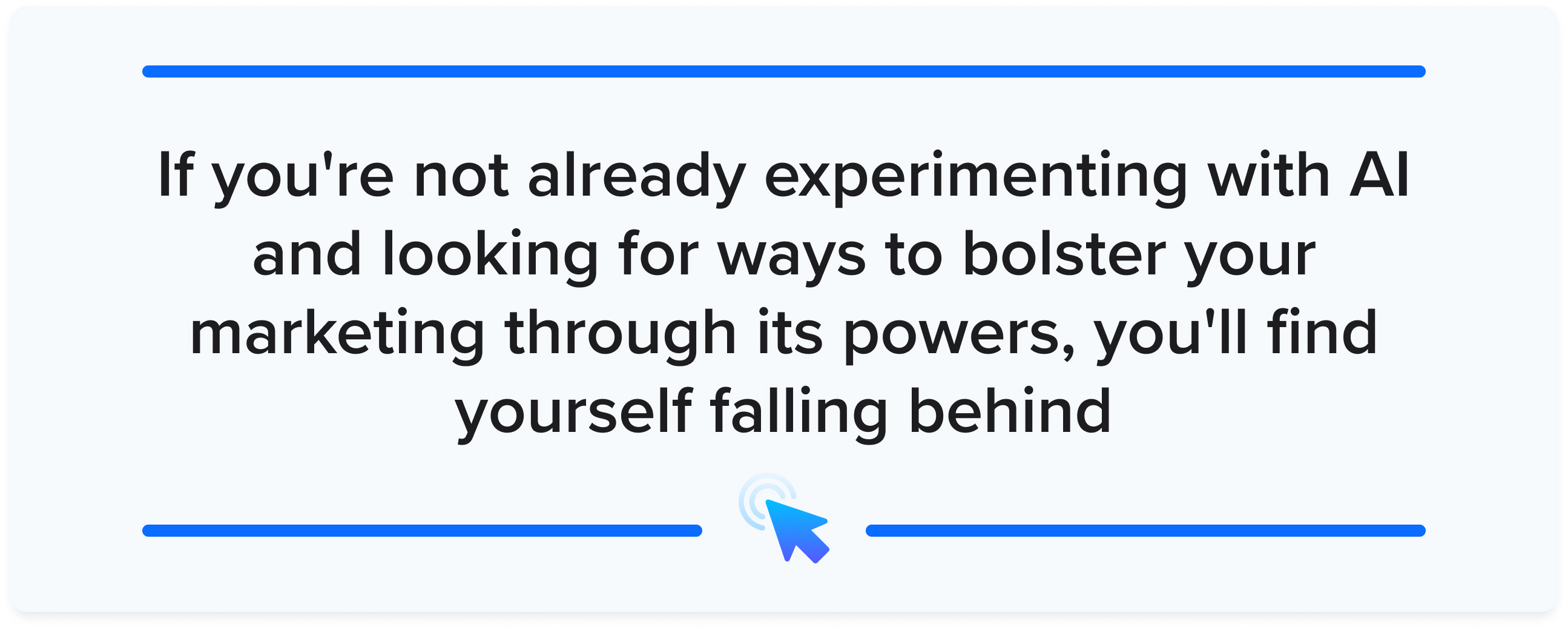
Although AI has allowed us to take massive leaps forward in the world of marketing, it is crucial that you have a human being at the helm. As long as your business has a voice and personality (which it should!) we are going to need someone who can weave that into your marketing.
That being said, it's crucial that you begin adopting AI into your internal processes. We can fight it all we want, but AI is here to stay and it's only going to get more prolific month over month from here on. If you're not already experimenting with AI and looking for ways to bolster your marketing through its powers, you'll find yourself falling behind.
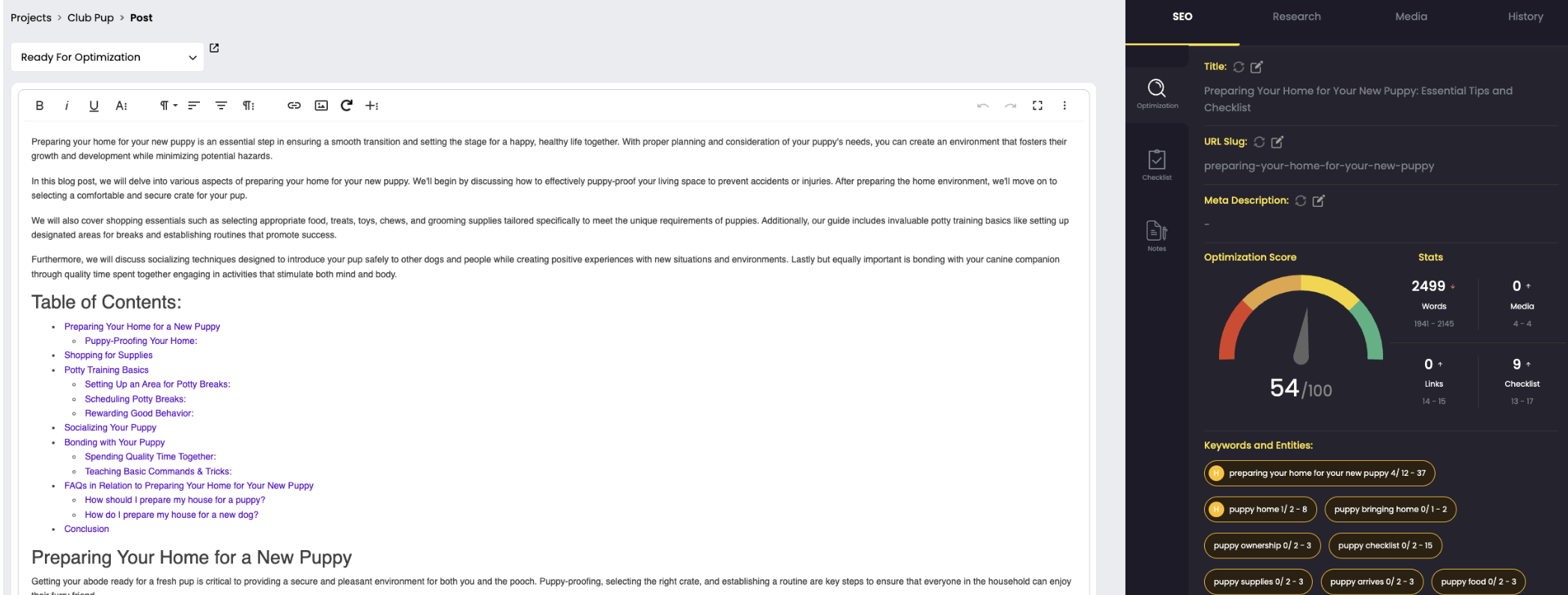
Your content managers should absolutely be using tools like Jasper or ChatGPT-4 to write outlines, reword content, and look for common questions within the industry.
Your videographer should be using tools such as Descript to cut down on that infuriating Premiere Pro editing process.
We don't encourage you to take on an AI tool for every single task, but you should figure out the parts of your strategy that could be automated because everyone hates doing them (looking at you, script writing!) or use it to boost the productivity of your employees.
Gone are the days of staring at a blank page and willing the gods of writing to strike you with a bolt of genius. You can go knock on writing's door and ask for help now.
Alignment with sales
Notice how sales alignment is cropping up again in this list? Does that mean you can choose one and not the other? Nope.
Not only do your marketing and sales team members need to work together, but so do your marketing and sales tactics.
The content that marketing is busy producing should be used the most by the salespeople. After all, what’s the point of spending time on writing blog posts and creating resources if they aren’t going to make money?
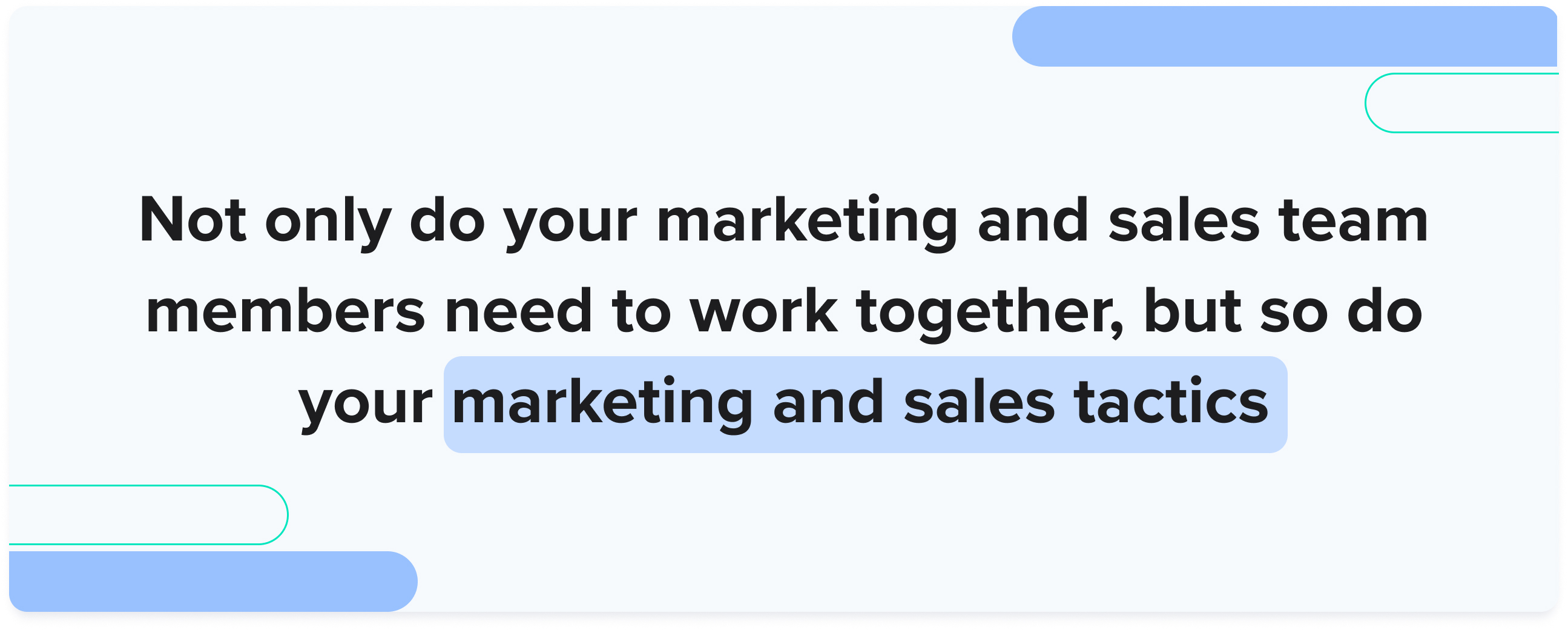
What does this sort of alignment look like?
- Imagine if your sales team frequently sends links to your blog articles in follow-up emails with prospects.
- Imagine if the sales team also uses the self-assessment tool you built when they're preparing a prospect for an upcoming call.
- Imagine if sales reps make sure the prospect has read the required content ahead of the next meeting.
This lock-step alignment is only possible if both departments work together and trust each other. Both sides benefit when they're working closely together.
Goals and purpose
Your strategy will need to address your overall goals for the coming year. What’s the WHY behind the work you do? What is it that you as a business want to achieve this year?
Depending on your industry, this is a key area to consider how world events may affect your plans. While your purpose shouldn’t change due to external factors, your annual goals — and outcomes — could fluctuate greatly.
Further, we are begging you to not make your goal or purpose to "make a bunch of money." We've seen over and over that simply trying to drive sales is a great way to drive a business into the ground. Really get into the details of what product or service you provide, and WHY that thing is important to someone.
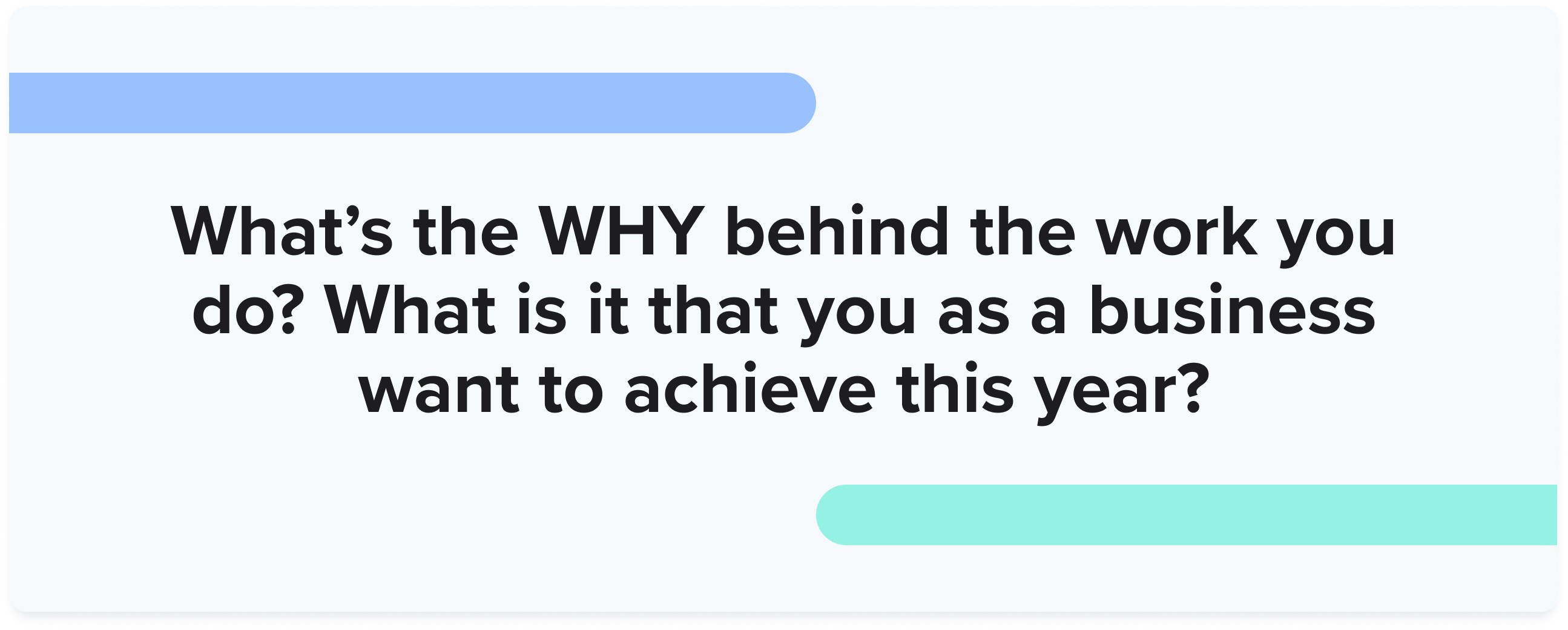
What emotional connections can be drawn between what you provide and what people need? Why are you different from everyone else in the industry? What is the niche you're speaking to?
And most importantly, how can you provide value to your audience?
Audience definition
That brings us to defining your audience. Your strategy should define who you are planning on reaching in order to measure your success. Your marketing efforts could have a million eyes on them, but if none of those people convert to actual sales, you'll have nothing but bragging rights afterward.
You don’t want to find out later you wasted a ton of time targeting the wrong people or the right people in the wrong way.
So, who are you trying to reach? Where do they spend their time?
Remember, when narrowing your audience, it's crucial to be honest with yourself and list out who you are NOT a fit for.
Content roadmap (or user pathways)
Customers need different content at different stages of their buyer's journey. Early on, they might be more focused on their problem than on a solution.
This "awareness stage" buyer is asking different questions than someone who is in the final stages, deciding between two options.
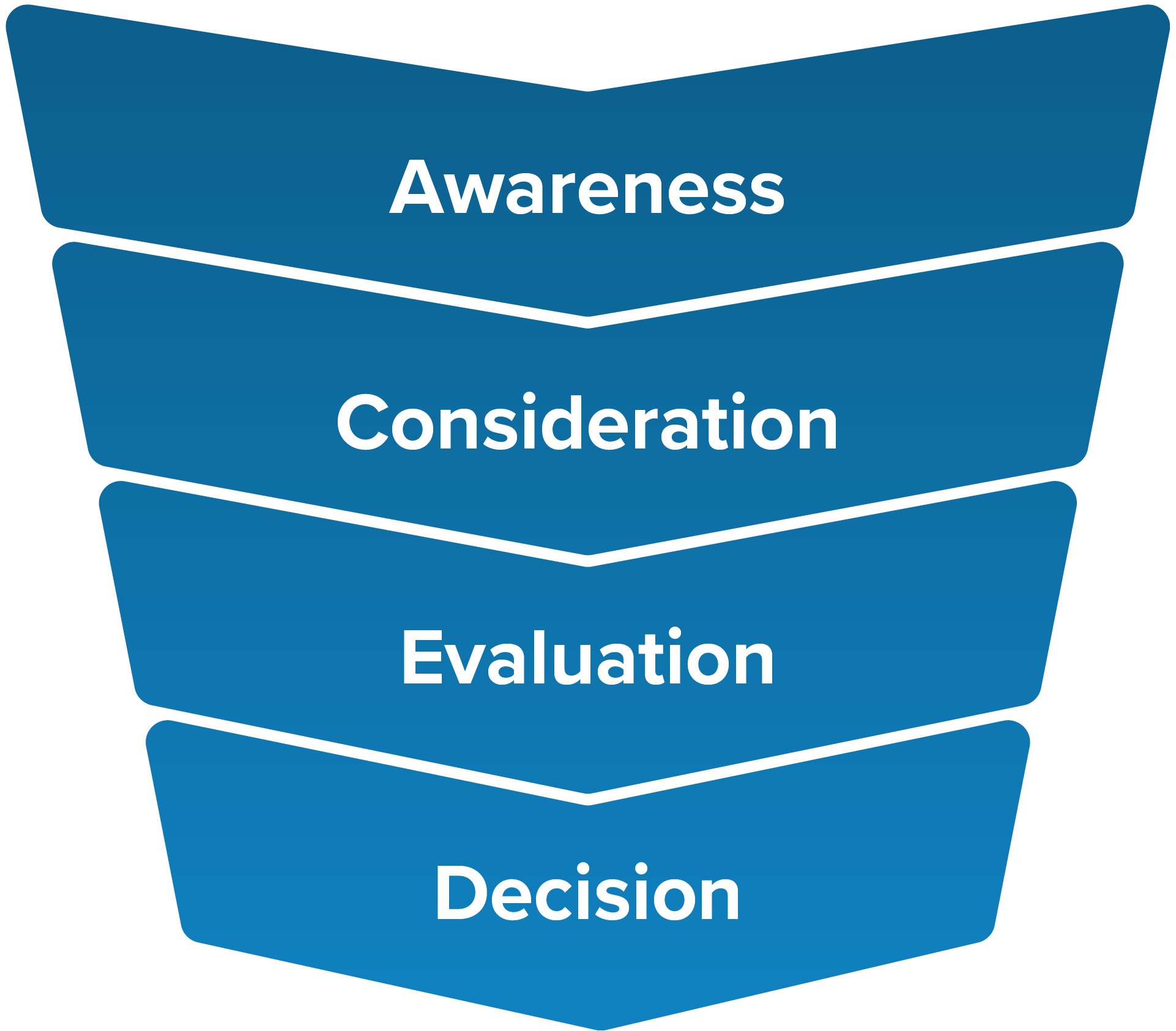
The perfect content strategy provides all necessary content across the entire customer lifecycle.
How you do this will depend on your industry, your business, and your customers. Suffice it to say, this section of your strategy is the most tactical. To build it, you may need to do a few things.
Note: not everything on this list will apply to every business.
- Plan an editorial calendar with this template that includes written and video content needs.
- Do necessary keyword research with a tool like Semrush.
- Craft and place the best CTAs you can to prompt appropriate next steps.
- Brainstorm other content needs like buyer's guides and case studies.
- Build self-selection tools to help buyers feel well-informed.
Customer-focused content
Customer-focused content is honest, trustworthy, and as unbiased as possible. This is content that truthfully answers the burning questions your audience has. It has their best interest in mind, which is what everyone wants to find when they're getting ready to make a purchase.
While every business is different, there remain some common topics all buyers want you to address.
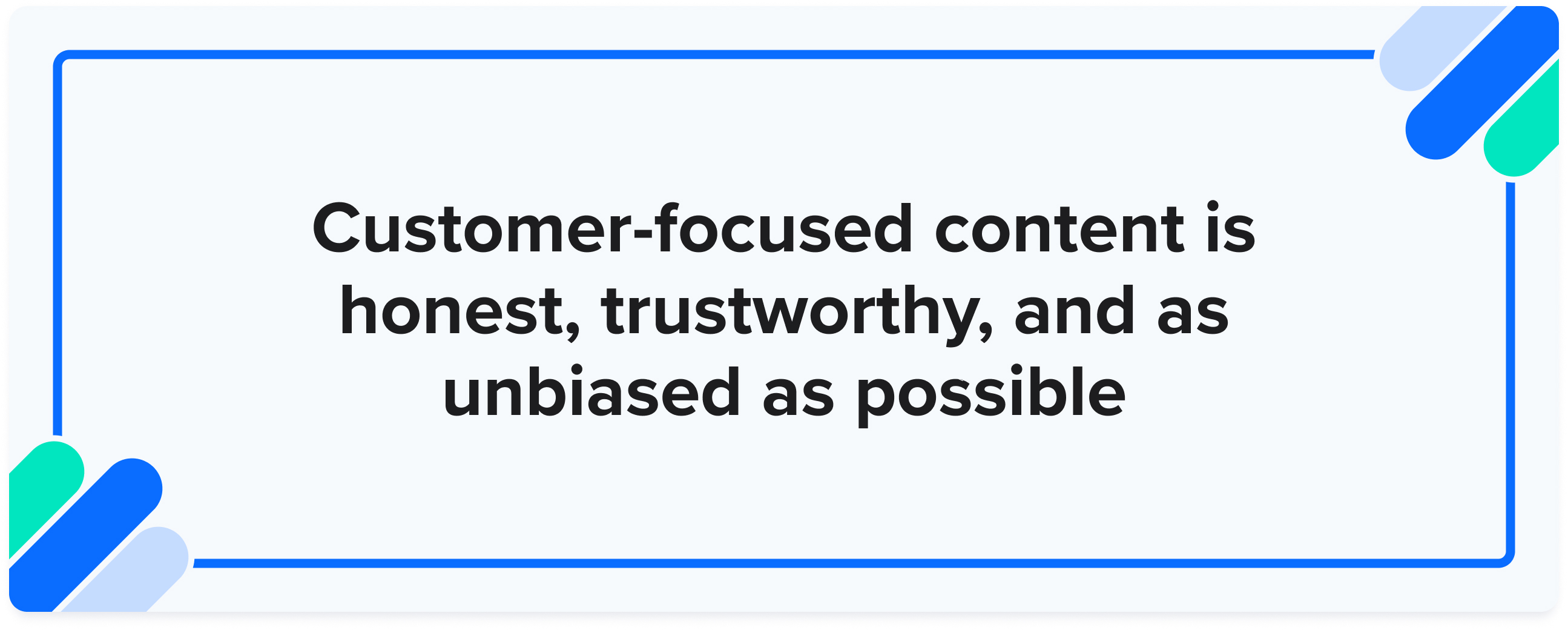
Think about what they’re asking you and your sales team on a regular basis and you’ll find that most of these questions break down into five categories we refer to as 'The Big 5'
If you do nothing else with your content except address these topics, you'll be in pretty good shape. That's how important they are.
Video content
Video.
Is it new? No.
Could you do more of it? Absolutely.
While the majority of marketers claim to be using video regularly, I work with several busy content directors who have had this on their to-do list for years.
Now's the time.
Video allows you to literally show who you are on a different level than writing. Plus — and this is a key component of being customer-focused. Video is one of the mediums most audiences want to see more of.
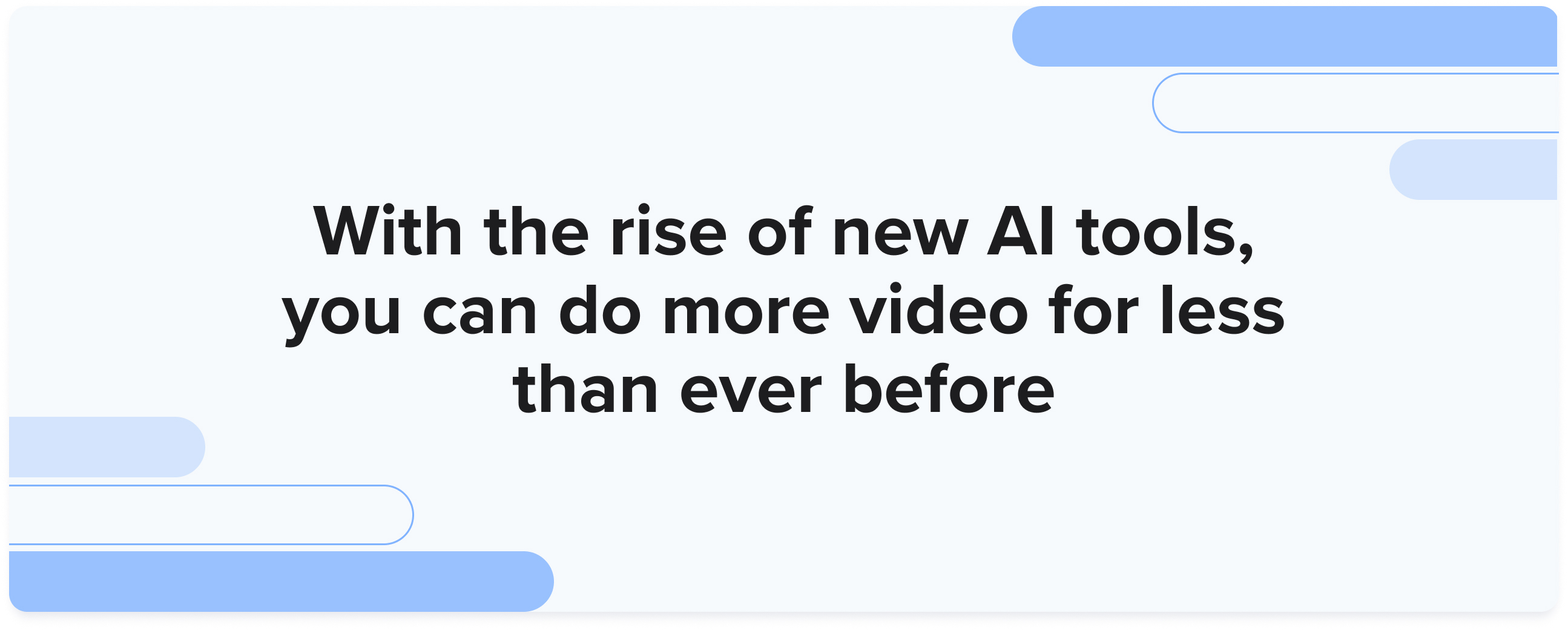
We’re now at the point where a solid majority (72%) of consumers would prefer to learn about a product or service via video.
Whether you use 1-1 video in the sales process, giving prospects the chance to form a relationship with your sales reps, or you create a well-produced video to liven up your homepage and convey the personality of your brand, video elevates the customer experience.
As you plan and budget for next year, don’t leave this important piece of the content puzzle out. And with the rise of new AI tools, you can do more video for less than ever before. You just need some basic video equipment and a willingness to experiment.
We are living in a time when your ability to foster trust is more important than ever — when it is also more difficult than ever as our ability to meet face-to-face is limited. Video is how you bridge that divide. So invest in it now before your competitors do.
Video Content in the World of Social Media
Platforms like TikTok, Reels, and YouTube Shorts have taken off. We know that the consumers are hyper-focused on little snacks of information that are easy to digest and quick to inform.
A short-form video strategy for social media is a crucial piece of the overall pie — and if you haven't grabbed a slice you're missing out.
One of the simplest ways to do this is to ask each person in your company to begin making short snippets of themselves just using their phone or webcam.
(Or, in this case, giving a talk.)
Remember, marketing is a team sport. Here's your time to shine. Everyone from the CEO to the sales team to the accountant has the ability to record themselves in a service like Vidyard, pop that video into Descript, and then let it fly on social media platforms.
Using short-form video in this way allows you to begin building thought leadership, which is a crucial component of success in the new year.
Imagine that you have a business that sells toasters. Your videographer can make tons of long-form content about their cost, features, FAQs, and even their aesthetics — but it's the people who are working day in and day out to butter that bread who know the most about it.
- Susie in sales can post on LinkedIn about a deal that she just won based around the number of slices a restaurant can toast at once.
- Bob in design ops can drop a few seconds on Instagram about the awesome aesthetics of the dials.
- Mary in accounting can discuss the relative merits of toasting bagels vs. English muffins.
At the end of the day, this culminates in getting your content, your people, and your company in front of more people.
'Martech' stack
There are more than 11,000 technology solutions for marketers, according to Scott Brinker. It’s truly overwhelming when you look at it all at once:
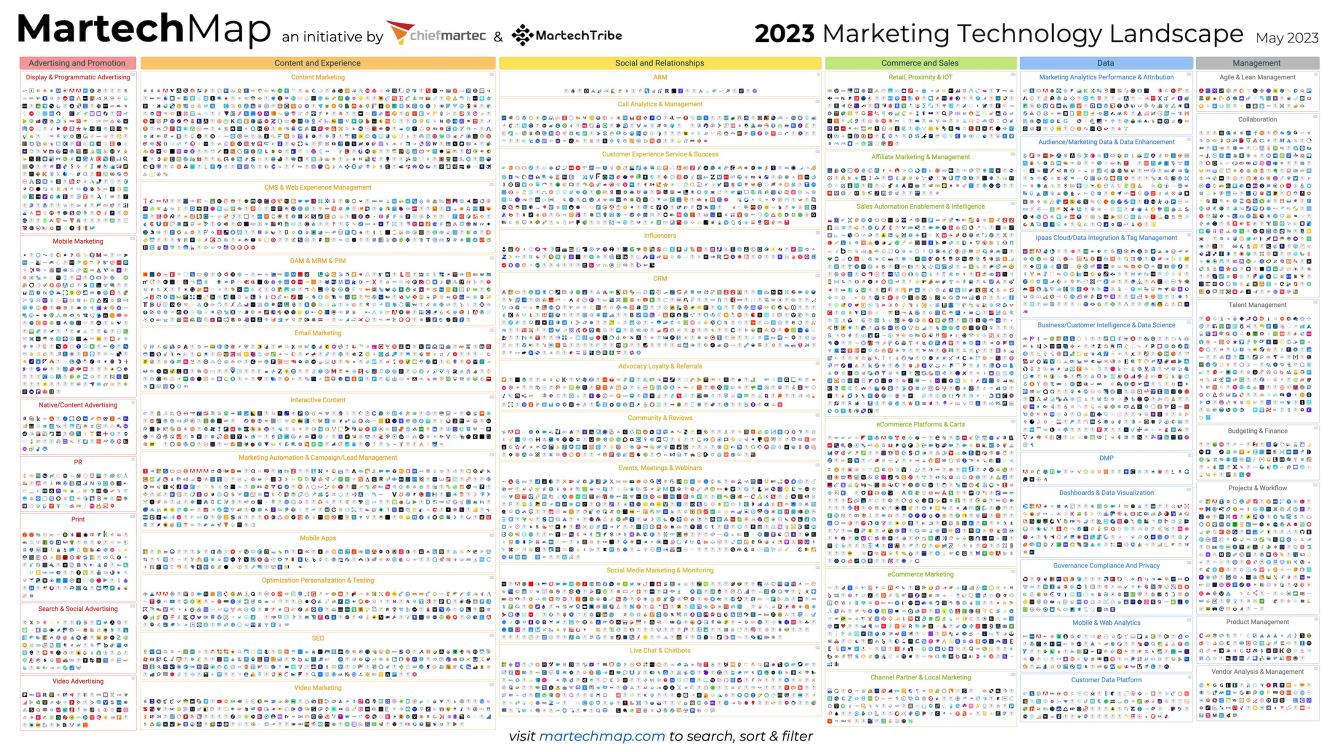
To get a better idea, here's how this number has gone up over time:
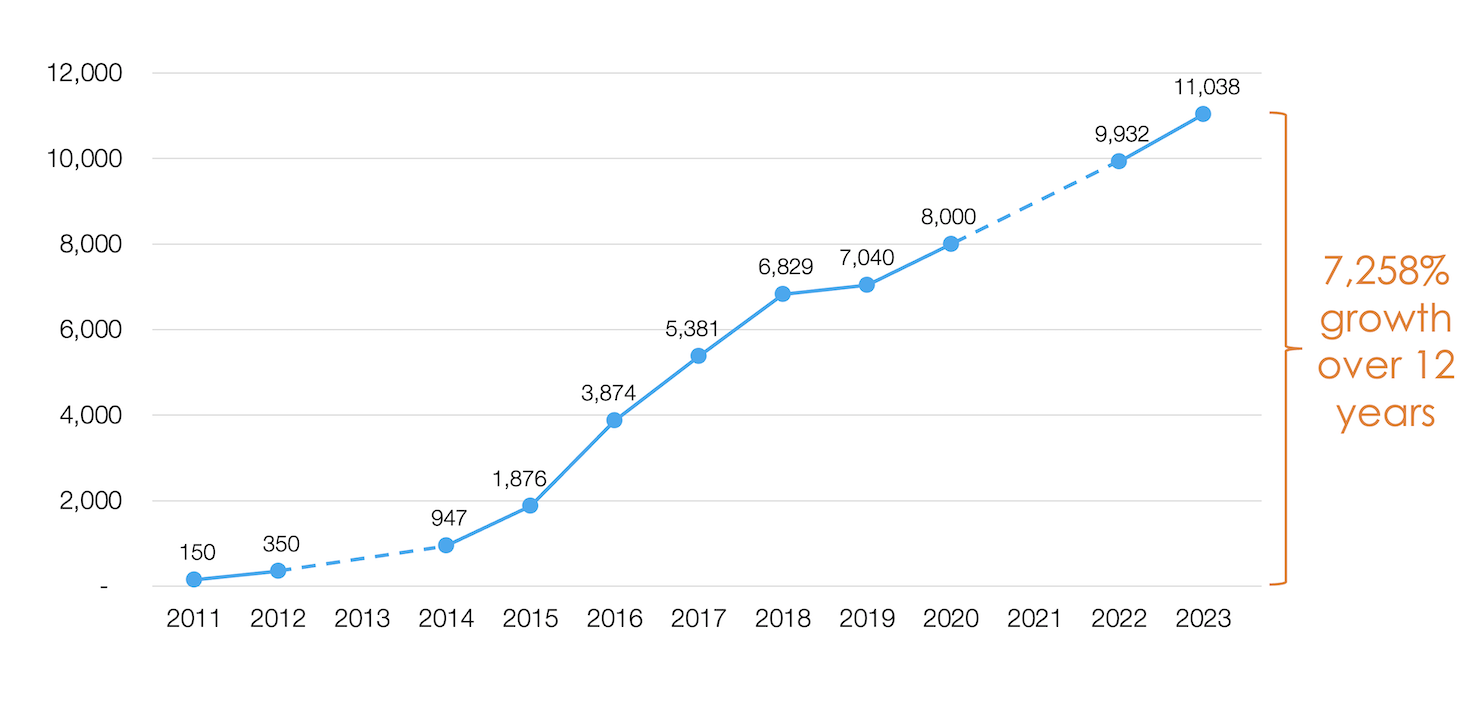
Take the time you need to determine exactly what you need to have to produce and distribute your content next year. Some of your must-haves will include:
- A content management system (CMS)
- A video-hosting service (we like Vidyard)
- Competitive intelligence software like Semrush or Ahrefs
- Project management tools (we use Trello and ClickUp)
- AI tools like Jasper, Vidyo
- Social media management software
- Paid advertising management
You’ll also want to keep in mind that the chart above grew by 13% from the year before (but they have not updated it since 2020. So anticipate that the next great thing might be out there, just waiting for you.)
I’m not suggesting that you need to jump on board with every new tech trend. But when you’re planning your strategy, make sure to leave time to stay up on what’s new and how it might change the marketing landscape.
While you’re taking stock of your technology stack, there are probably some apps or programs that aren’t as useful as they used to be. Now is the time to jettison those to make room for the new toys you’ll collect throughout the year.
Honesty: The must-have component of your 2024 content strategy
Whether you’re a marketing director of a local business or a content manager of a national brand (or something in between), the thing you can never lose sight of is your customer.

Being customer-focused isn’t just a component of your content marketing strategy — it should be your obsession.
More than anything else right now, buyers want one thing and one thing only: Honesty.
Your ideal customers don’t want to be sold to. They want candid, thorough answers to their questions. They want real, substantive solutions to their everyday problems.
Buyers don’t want to be cheated out of their money or convinced to buy something that isn’t right for them. Human beings crave humanity, care, and understanding — even from brands.
This is also a reminder of why you need a real life human to wrangle any AI that you may be using. AI has convinced the vast majority of businesses that they can churn and burn content quickly — and that's an amazing opportunity for you.
If you leverage, make sure you maintain your human touch.
The more they trust the information you give through your content, videos, pillar pages, and so on, the more likely they are to come to you when they are finally ready to make that buying decision that makes them (at last) one of your buyers.
Building your strategy and embracing the chaos
Building a content marketing strategy during a time of uncertainty can be taxing.
But it doesn’t have to be. Your audience isn’t a group of faceless beings out there to poke holes in what you have to say. They’re people who are looking for information they can trust.
In order to meet that need, bring your company together by having everyone buy-in to your content strategy. Dedicate time to creating content that is truthful and relatable. And do so with the content with the entire organization participating.
This is not easy. Remember to take it slow and to be kind and honest with yourself and with your audience. Be sure to give yourself the tools you need to make the next year — and your 2024 strategy — exactly what you want it to be.


Order Your Copy of Marcus Sheridan's New Book — Endless Customers!


